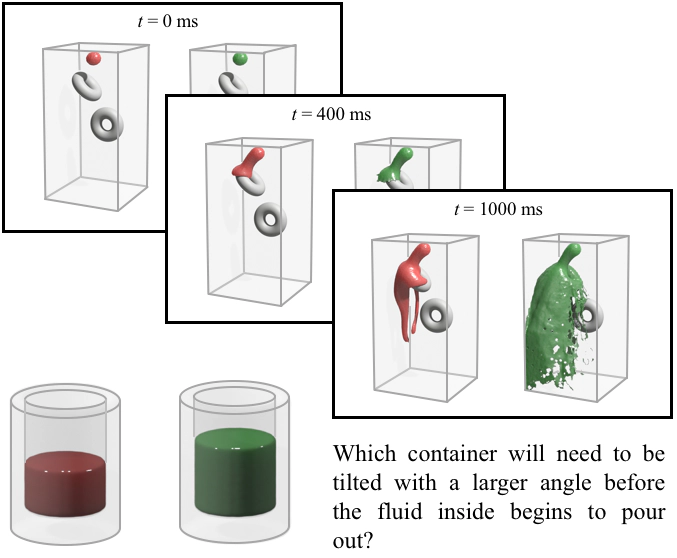[CogSci16] Probabilistic Simulation Predicts Human Performance on Viscous Fluid-Pouring Problem

Abstract
The physical behavior of moving fluids is highly complex, yet people are able to interact with them in their everyday lives with relative ease. To investigate how humans achieve this remarkable ability, the present study extended the classical water-pouring problem (Schwartz & Black, 1999) to examine how humans take into consideration physical properties of fluids (e.g., viscosity) and perceptual variables (e.g., volume) in a reasoning task. We found that humans do not rely on simple qualitative heuristics to reason about fluid dynamics. Instead, they rely on the perceived viscosity and fluid volume to make quantitative judgments. Computational results from a probabilistic simulation model can account for human sensitivity to hidden attributes, such as viscosity, and their performance on the water-pouring task. In contrast, non-simulation models based on statistical learning fail to fit human performance. The results in the present paper provide converging evidence supporting mental simulation in physical reasoning, in addition to developing a set of experimental conditions that rectify the dissociation between explicit prediction and tacit judgment through the use of mental simulation strategies.